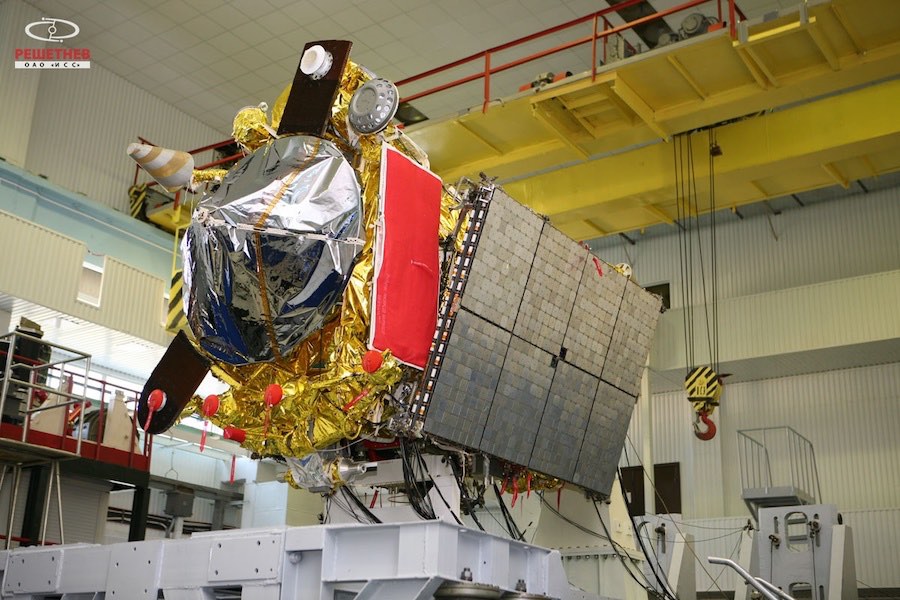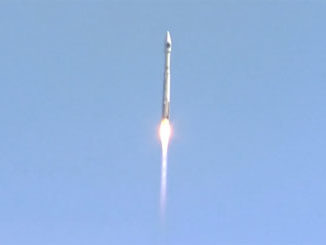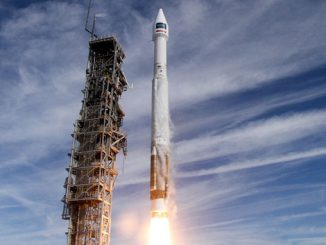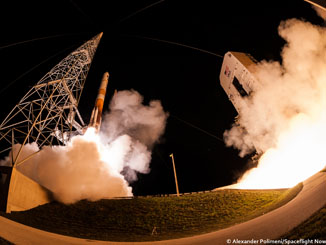A geodetic surveying satellite for the Russian military successfully launched Friday aboard a Rockot booster — a modified ballistic missile — from the Plesetsk Cosmodrome.
The 95-foot-tall (29-meter) Rockot launcher lifted off at 1400 GMT (10 a.m. EDT; 5 p.m. Moscow time) Friday from Plesetsk, according to a statement released by Roscosmos, the Russian space agency.
Roscosmos said the two-stage Rockot performed its launch sequence as designed, and a Breeze KM upper stage delivered its payload into the targeted orbit.
The Rockot’s two lower stages are from a decommissioned SS-19 ballistic missile, known in Russia as the UR-100N. The Rocket fired out of an above-ground launch canister at Plesetsk, a military spaceport around 500 miles (800 kilometers) north of Moscow in the Arkhangelsk region.
Heading northwest from Plesetsk on a trajectory over the Arctic, the two lower liquid-fueled stages fired in succession in the first five minutes of the flight, then the Breeze KM upper stage ignited two times to reach the mission’s intended orbit.
Tracking data released by the U.S. military indicated the Breeze KM upper stage deployed its payload in a nearly circular orbit around 590 miles (950 kilometers) above Earth, at an inclination of 99.3 degrees to the equator.
The launch time and orbit achieved on Friday’s mission match those of a Rockot mission in 2016, which carried the previous GEO-IK 2 geodetic satellite into space.

The payload launched Friday was expected to be renamed Kosmos 2540, keeping with the Russian Defense Ministry’s naming system for military spacecraft.
The GEO-IK 2 satellites measure Earth’s shape, gravity field, rotation and tectonic movement — information then used by the Russian military to aid satellite tracking, global navigation and inform the computation of missile trajectories.
Built by the Russian satellite contractor ISS Reshetnev, the GEO-IK 2 satellites each weigh around 2,000 pounds (900 kilograms). The spacecraft is designed for a five-year mission.
The first GEO-IK 2-series satellite launched into a lower-than-planned orbit in 2011 by a Rockot/Breeze KM vehicle, and the second GEO-IK 2 spacecraft successfully launched in 2016. The GEO-IK 2 satellites replace an earlier generation of geodesy spacecraft launched in the 1980s and 1990s.
“The GEO-IK 2 satellites will join the Russian fleet of geodetic spacecraft designed to measure variations in the Earth’s gravitational field, to build a high-precision geodetic network in the geocentric coordinate system, as well as study continental plate motion, tides, the Earth’s rotation and coordinates of poles,” ISS Reshetnev said in a statement marking the previous GEO-IK 2 satellite launch in 2016.
Friday’s launch marked the 30th flight of a Rockot/Breeze KM launch vehicle since May 2000. The Russian aerospace contractor Khrunichev oversees the Rockot program.
Email the author.
Follow Stephen Clark on Twitter: @StephenClark1.



